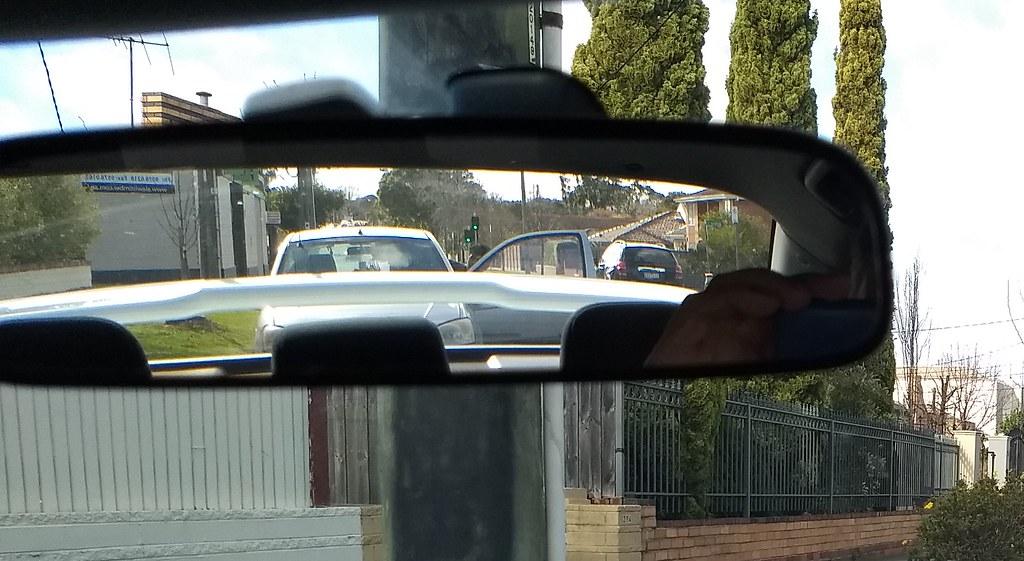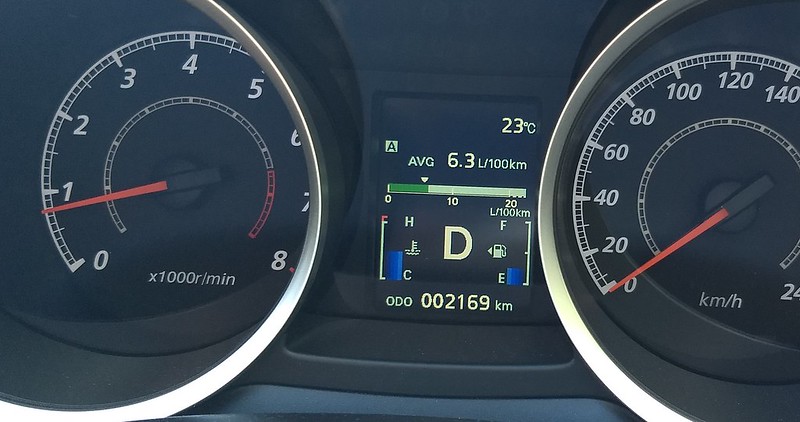Sorry PT fans, this is a blog about driving.
I’ve had the new car, a 2017 Mitsubishi Lancer bought brand new, a year now, and have got to just on 10,000 kilometres so far.
The average in Australia is about 15,000 km per year, but some drive a lot further. My past average is about 7-8K, but circumstances (principally one son who just got his licence) has us driving more than in the past.
I’m liking the car. The only thing I don’t like is the rear spoiler. I think it looks a tad silly, I doubt it has great aerodynamic benefits, and it partially blocks the view from the rear vision mirror and when doing a left shoulder check.

Taking off the spoiler is theoretically easy. You just unbolt it. But filling the bolt holes is the tricky bit, especially in such a way that it’s not noticeable and doesn’t let leaks in. The car dealer even suggested checking spare parts places/wreckers for a replacement boot lid might be easier.
I suspect the base model Lancer only had the spoiler to try and put off people like me who are grown ups and don’t really want a spoiler and should probably spend more on a car… but my fiscal sensibilities defeated them. And judging from the people I see driving the same model of car, I’m not the only one.
Aside from the unwanted spoiler, no issues with the car, other than being new I feel like I have an obligation to keep it clean, which is tricky, especially with a gravel driveway that has lost most of its gravel. Might be time for a top-up.
There has been a minor mishap (a low speed bump with a parking sign) necessitating a surprisingly expensive repair. But hey, I wasn’t driving it. Protip: if you have a large insurance excess, get a quote first; it may not be worth claiming.
Given the car often sits in the driveway for many days at a time, I’m also pondering if I should sign up for Car Next Door, but we now have another driver in the house.
Learning to drive
I taught my younger son to drive. The elder isn’t interested just yet.
This was an interesting experience. He had a number of paid lessons as well, and our practice drives complemented them nicely.
What we agreed was really valuable was that we tried lots of different types of road. Freeways for instance don’t get a lot of love for learner drivers in Bentleigh/Moorabbin, because there aren’t any nearby. The art of entering a freeway (matching the existing traffic speed) is important, and seems to be lost on some motorists.
On one drive we cruised around Elwood, taking in narrow streets, cobble-stoned laneways, and the fords of Foam Street and Wave Street.
On another drive we hit the CBD late on a Sunday afternoon and got in a hook turn, the roundabout of death, driving safely around trams, and that tricky road on the northern side of Melbourne University – where I once saw a motorist stop dead in the middle of an intersection out of sheer confusion.
And, surprisingly close to home, we found a dirt road (not the one pictured above), to sample the reduced grip of an unsealed surface – plentiful in rural areas.
Come test day, he passed first time – and of course with each drive, he gets better.
Nobody’s perfect of course, but he tells me that now he’s driving himself, he’s surprised at how many bad drivers there are on the roads. Yeah, ain’t that the truth.
Car fuel consumption
I switched the information display on the console to display how many litres per 100 kilometres we’re using.
It looks like typically about 6-8 litres if driving with the air-conditioning off; about 8-10 with it on. Short drives are evidently less efficient; long freeway drives bring the fuel consumption down – as long as it’s not congested.
Choice has an interesting article on driving for fuel efficiency.
Of course the best way to cut fuel use is not to drive and the long term habit in our family is to consider carefully which transport mode we use, rather than jump in the car every time. We’re lucky to have viable choices for many of our trips.
Cost per kilometre
Given I now have an actual (not forecast) number of the kilometres per year, 10,000, I can re-calculate my estimated costs per kilometre:
- Depreciation 11.1 cents
- Insurance 7.1 cents
- Registration 8.2 cents
- Servicing 2.3 cents (thanks to fixed price in the first 3 years)
- Petrol 10.8 cents
That’s a total of 39.5 cents per kilometre.
Based on 8000 kilometres per year, it was 43.9 cents per kilometre, so as you can see, the more you use it, the cheaper it gets, as the fixed costs such as insurance and rego don’t change.



9 replies on “A year in the new car”
I’m very surprised you could add 20% in fuel use by turning on the air conditioner. My cars have barely noticed it. On a hot day, my car reports about 1 litre per hour being consumed by the air conditioner and for most of the year, it’s close to nothing.
(A *very* hot day)
@Philip, I probably need to be a bit more scientific about it – it’s only my rough guess based on the couple of times I’ve glanced at the number.
It does seem like running the aircon stretches the engine far less than in the 2000 Astra!
On the “instant fuel consumption” calculator, running aircon seems to make barely any difference in my i30. In summer I just leave it on.
How large would the bolt holes be? Could pop rivets do the job?
Daniel, your article should have started with a SPOILER ALERT.
I drove a work car once with a spoiler. Yes, it is irritating when checking the rear vision mirror.
I’m annoyed that spoilers are allowed under our ADRs. They never serve a useful purpose at legal speeds and always obscure rear vision. It must be based on an assumption that most people never bother looking out the back window anyway…
I think it’s just Mitsubishi marketing towards the younger drivers. After all, it is a Lancer – even in the 90s they were all the rage (even the 3-door Mitsubishi Mirage). Mitsubishi did the same marketing with the Sigma Turbo and (non-turbo) GSR models in the 80s, as well as the Magna Elanté in the early 90s, turning an otherwise bland car into something a bit more fun, even if it was only cosmetic (except the Sigma Turbo of course). Given that they had to kill off the Valiant in the early 80s (the last Valiants were sold by Mitsubishi, although they all retained the Chrysler badges to keep the purists happy) leaving their largest car the Sigma, they had to at least come up with something to keep sales going given that there was no way they could compete against the 6-cylinder Commodore/Falcon (let alone the V8s).
It’s funny you mention the roundabout of death, it’s somewhat better now, before signalisation, the layout used to be different (and slightly worse). But for cyclists, I think the somewhat ‘cyclist-unfriendly’ design has not changed, OTOH.
The other roundabout is also just poorly drawn, in my opinion. Especially WB into College Crescent.